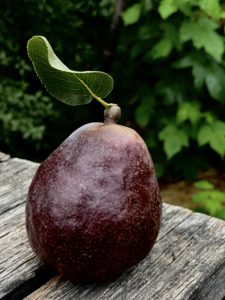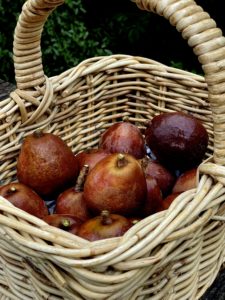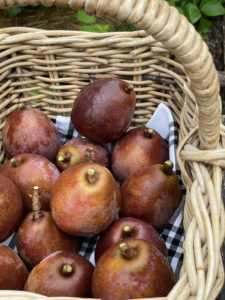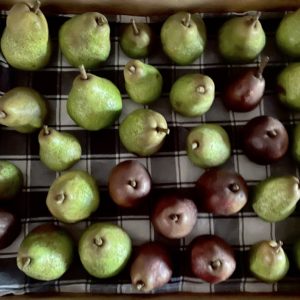
If you leave your pears to ripen on the tree, the birds, possums and wasps with get them before you.
Remember that it is wasp season at the moment. They love to eat the inside part of the fruit that you might not be able to see when you are picking the actual fruit. Before you pick anything, check it over from all angles to prevent sticking your hand on a piece of fruit full of hungry wasps.


It’s always hard to time when the pears are ready, but after years of trial and error I now have maximum harvests. Mind you, I have lost my fair share in the past. The trick is to pick them before they ripen on the tree. That’s right, yes, pears can ripen off the tree.
Here is my go to method:
1. As the due date comes closer for harvest time, I watch and observe the trees and I test the pears. No poking or prodding them. Simply place the palm of your hand under the base of a pear and slightly turn your wrist, the pear will move ever so slightly, if the pear comes off the tree it will already be resting in the palm of your hand. That is when you pick as many pears as possible using this method. Leave the rest, they will be ready in a day or two.
2. Place the pears gently into a basket with a tea towel on the bottom. The tea towel prevents the delicate skin of the pears from rubbing up against the sides of the wicker basket.
*If pears have bird poo on them, they get put to the side and I come back to them after I have dealt with the pears for human consumption. The poo gets washed off with the garden hose and then put on the ground in the Back Orchard away from the walking paths in case wasps find them. The hens usually eat them quickly or the wild birds will. If our hens eat them, it is good diversity in their diets. If the wild birds eat them, then hopefully they aren’t eating the fruit still on our trees.
3. Bring your pears inside. Hand wash (rinse them under the cold tap) and dry them with a clean tea towel. Lay another clean tea towel on a table or a tray and place the pears on it so they are at least 1-2 cm apart, and careful that they don’t touch each other. That can cause bruising, lack of air flow, welcome mould and those little bugs that like over ripe fruit. Keep the pears out of direct sunlight in a cool spot.
4. Keep an eye on the pears, they will ripen quickly depending on the weather at your place and where you have the pears stored.

The Beurre d’Anjou and Williams pears have been harvested. Both varieties are on the tray in the photo above, plus there are more out of shot. The Beurre d’Anjou were picked late in the day when there was misty rain. Michael and I were both getting soaked and it was well and truely dinner time. Realising that some pears were ready to harvest we knew that we had to check the other trees. We have both experienced that sinking feeling were you think – oh I’ll get them tomorrow – only to discover the tree bare the next day!
It was a cold, wet Spring and now the driest Summer in 40 years here. I’m grateful for every crop we are managing to harvest
Pear Harvest.
March 3, 2022
comments
share